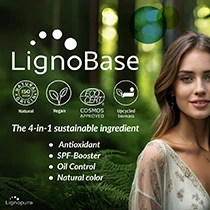Animal testing for cosmetics: Chinese law elicits “ethics dumping” from EU brands despite cruelty-free claims

06 Feb 2023 --- Animal testing for cosmetics has been banned in the European Union (EU) for ten years but due to various loopholes consumers are unknowingly purchasing products that have been tested on animals. Meanwhile, some brands continue to sell into international markets that still require animal testing on cosmetics, notably China.
As the European Citizens’ Initiative (ECI) Save Cruelty-Free Cosmetics/End Animal Testing receives validation of over 1.2 million signatures, pushing the initiative forward for the European Commission (EC) to examine, PersonalCareInsights is publishing a series of reports on the current state of animal testing for cosmetics and personal care products.
We speak to activists, working societies, NGOs and leading personal care industry giants. We also hear from experts at EC’s European Chemicals Agency (EHCA) about its take on alternatives to animal testing under REACH (Registration, Evaluation, Authorisation and Restriction of Chemicals).
March 2023 will mark a decade since a full ban on the sale of cosmetics that include ingredients tested on animals came into force in the EU. To comply with the EU Cosmetics Regulation ban on animal testing, ingredients cannot be used in cosmetic products if they have been tested on animals anywhere in the world. This regulation is seen as the gold standard around the world, according to Julia Fentem, head of Unilever’s Safety and Environmental Assurance Centre.
However, in 2020 under REACH, ECHA concluded that certain substances must be tested on animals even if they are solely for use in cosmetics. The agency says this rule is necessary to assess any risks to workers in factories during product manufacture.
 PETA elucidates that over 10 million animals annually endure “an agonizing existence” in laboratories all over Europe (Image credit: PETA US).The End Animal Testing ECI was launched in August 2021 by animal protection organizations Cruelty Free Europe, PETA, Eurogroup for Animals, the European Coalition to End Animal Experiments and Humane Society International (HSI) Europe.
PETA elucidates that over 10 million animals annually endure “an agonizing existence” in laboratories all over Europe (Image credit: PETA US).The End Animal Testing ECI was launched in August 2021 by animal protection organizations Cruelty Free Europe, PETA, Eurogroup for Animals, the European Coalition to End Animal Experiments and Humane Society International (HSI) Europe.
The initiative puts forward three requests: protect and strengthen the cosmetics animal testing ban, transform EU chemicals regulation and modernize science in the EU.
This report identifies the current loopholes in the EU regulations surrounding animal testing. It also considers what a complete ban would mean for product efficacy requirements in international markets.
Chinese law and EU loopholes
PETA UK science policy manager Dr. Julia Baines exposes the loopholes in EU and Chinese animal testing regulations to highlight the fact that a company claiming to be cruelty-free in the EU could be simultaneously testing on animals in order to sell to the Chinese market.
According to the Cosmetic Supervision and Administration Regulation, implemented in 2021 by the National Medical Products Administration (NMPA), in order to be exempt from animal testing in China, the ordinary cosmetics product formula must only contain ingredients that have passed the three-year monitoring period and been included in the 2021 Inventory of Existing Cosmetic Ingredients list.
If there is a special claim, such as SPF protection or use on children, animal testing is mandatory and a complete technical review by the NMPA is required before import and sale to China.
“The way the EU legal text is written means the only way it can be justly interpreted is that [cosmetic brands] cannot market any products that rely on the results of animal tests in order to demonstrate safety,” Dr. Baines tells us.
“It’s a form of greenwashing where companies may have policies saying we do not test on animals but can get away with it. Even if the products are tested for the Chinese market, the company itself is not testing – the Chinese regulatory authorities actually do the testing. So it’s a very clever play on words.”
In simple terms, Dr. Baines says companies can sell the same product formulations in the EU that have been tested on animals for Chinese legislative purposes, so long as the animal testing safety data is not used in the EU. For Walder at Eurogroup for Animals, ECHA’s position places an “artificial divide” between consumers and workers.
For Walder at Eurogroup for Animals, ECHA’s position places an “artificial divide” between consumers and workers.
“It may be that a Draize rabbit eye test, for example, has been conducted for the Chinese regulations, but so long as the company has the equivalent non-animal data, they can still market those same products in the EU,” she illustrates.
“These loopholes make it difficult for consumers who aren’t aware of all of these technical ins and outs.”
Unilever unites against animal testing
FMCG giant Unilever holds a strong position against animal testing of all kinds and is also invested in working with Chinese scientists and regulators to accelerate the acceptance of alternative methods.
Moreover, the company helped over a hundred animal protection organizations to launch the #SaveCrueltyFreeCosmetics campaign. It has also been a vocal supporter of the ECI.
“No testing has been required for Unilever’s cosmetics manufactured in China since 2014 and for Unilever brands that have a presence in China,” a Unilever spokesperson shares with PersonalCareInsights.
“Taking Dove (certified by PETA in 2018) as an example, one of the steps it took was to enact a policy removing permissions for any post-market animal testing in China. This means that the Chinese authorities will notify Dove if there is a safety question so the product can be withdrawn rather than be subject to animal testing.”
Regarding ECHA requirements and the need for the ECI, Unilever states that “unfortunately, progress is now not just stalling, it’s also starting to take a backwards slide,” due to what it views as separate and contradictory regulations for cosmetics and chemicals in the EU.
Beauty hurts with animal tests
Elaborating on the ECHA requirements, Laurence Walder, animals in science programme consultant at Eurogroup for Animals, tells us: “Despite the bans, the ECHA, supported by the EC and the ECHA Board of Appeal, continues to demand new tests on animals for chemicals used as cosmetics ingredients under the REACH Regulation.”
“This policy – which they now apply even to chemicals used exclusively in cosmetics – erodes the bans and goes against legislators’ intention to create them: that animals no longer suffer and die for the sake of cosmetics.”
 Dr. Baines says consumers aren’t aware of the technical ins and outs of the animal testing legislations. She elaborates that ECHA’s position places an “artificial divide” between consumers and workers, disregards a long history of safe use for many of these ingredients, violates the legal requirement to use non-animal methods instead of tests on animals wherever possible and forces cosmetics regulators to disregard the animal test results to avoid triggering the bans.
Dr. Baines says consumers aren’t aware of the technical ins and outs of the animal testing legislations. She elaborates that ECHA’s position places an “artificial divide” between consumers and workers, disregards a long history of safe use for many of these ingredients, violates the legal requirement to use non-animal methods instead of tests on animals wherever possible and forces cosmetics regulators to disregard the animal test results to avoid triggering the bans.
ECHA explains: “REACH is a regulation adopted to improve the protection of human health and the environment from the risks that can be posed by chemicals while enhancing the competitiveness of the EU chemicals industry. It also promotes alternative methods for the hazard assessment of substances in order to reduce the number of tests on animals.”
Animal testing as the last resort
Speaking to PersonalCareInsights, Ofelia Bercaru, director for prioritization and integration at ECHA, previously shared that currently, there are no alternatives to replace all animal testing that would be adequate for classification and labeling and risk assessment purposes in the EU.
“Companies that place products on the markets must ensure their safety and for that purpose, animal testing is still in some cases necessary. We encourage companies to use alternative methods and animal testing should only be used as a last resort.”
“REACH sets the legal requirements to ensure the safety of chemicals, including for workers. Especially long-term effects of chemicals are under the spotlight, such as their toxicity to reproduction or their ability to cause cancer. For these effects, there currently are not yet valid alternative test methods available,” underlined Bercaru.
Non-animal methods and “ethics dumping”
Meanwhile, a spokesperson from the research and toxicology department at HSI informs us that non-animal alternatives have been heavily impacted by weightage provided to animal tests for safety assessment.
“Animal tests for so many years have been treated as and invested in as though they are the only option for chemical safety. Funding must be redirected into new technologies to better develop what is already available and innovate novel approaches in order to fully move away from animal testing,” they highlight.  Import and sale of personal care products to China for special claims such as SPF protection mandates animal testing (Image credit: PETA US).
Import and sale of personal care products to China for special claims such as SPF protection mandates animal testing (Image credit: PETA US).
“Given the way current regulations are written and the expectation that non-animal tests should be a (1:1) direct replacement for an animal test, instead of providing more biologically driven, human-relevant information, it is unlikely that a non-animal test could be provided for every single test required for safety testing. However, this could change with prioritized investment in innovative, animal-free technologies that advance science and accelerate progress.”
Dr. Baines at PETA elucidates that over 10 million animals every year – including cats, dogs, rabbits and mice – endure “an agonizing existence” in laboratories all over Europe.
“Despite scientific advancement and innovation in superior non-animal methods, such as organ-on-a-chip technology, models using human cells or tissues and advanced computer-based models, we have yet to see a significant decline in the use of animals.”
“We are concerned about ‘ethics dumping’ – Western scientists working in countries with less oversight, few to no animal protection laws and no public right-to-know ‘open records’ laws.”
“Whether experiments occur in China or elsewhere, subjecting sensitive fellow animals to a life of being force-fed cosmetics ingredients or genetically modified to develop human diseases before being killed and dissected is unspeakably cruel, and unlike state-of-the-art non-animal methods, it impedes scientific breakthroughs that better protect human lives,” she concludes.
By Radhika Sikaria












